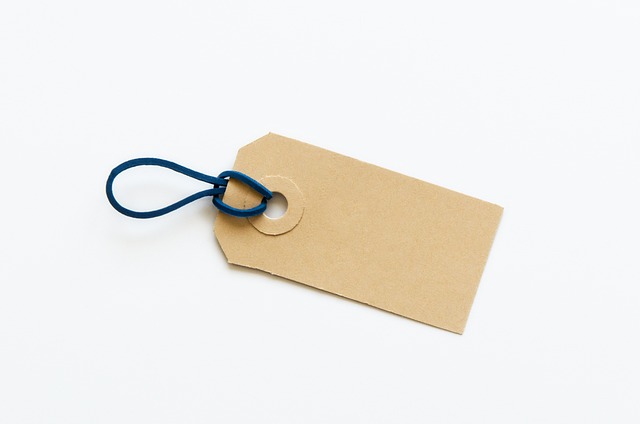Skin tags, common growths in friction-prone areas, are usually harmless but can be removed if unsightly or uncomfortable. Leeds Tag Removal offers various methods from at-home topical creams (requiring patience) to surgical procedures with quick recovery times. Alternative non-surgical options like laser therapy and cryotherapy are popular choices. Proper aftercare, including cleaning, moisturizing, and protecting treated areas, is crucial for preventing recurrence in Leeds Tag Removal.
Skin tags, those harmless yet often unsightly growths on arms and legs, can be a source of embarrassment. This guide explores effective treatment options for Leeds tag removal, empowering you to bid farewell to these small blemishes. From understanding their causes and demographic prevalence to examining non-invasive methods like topical creams and surgical procedures with their pros and cons, we cover everything. Discover alternative treatments like laser therapy and freezing, and learn valuable post-removal care tips to prevent recurrence.
- Understanding Skin Tags: Causes and Demographics
- Non-Invasive Removal Methods: Topical Creams and Salves
- Surgical Options for Tag Elimination: Pros and Cons
- Alternative Treatments: Laser Therapy and Freezing
- Preventing Recurrence: Post-Removal Care Tips
Understanding Skin Tags: Causes and Demographics
Skin tags, also known as acrochordons, are small, soft skin growths that typically appear on the neck, armpits, and areas where skin rubs against itself, such as the arms and legs. They are usually harmless and often hereditary, with a higher prevalence among certain demographics. People of all ages can develop skin tags, but they are more common in middle-aged adults, especially women. Obesity is another factor; excess weight can lead to increased friction in skin folds, fostering tag development.
While they are generally benign, some individuals may find them unsightly or uncomfortable. This has driven interest in various Leeds Tag Removal methods, ranging from at-home remedies to medical procedures. It’s important to note that not all tags require removal, and consulting a healthcare professional is advisable to determine the best course of action based on size, location, and personal preference.
Non-Invasive Removal Methods: Topical Creams and Salves
Many people opt for non-invasive removal methods when it comes to skin tags, particularly on areas like arms and legs. One popular choice is using topical creams or salves, which can be an effective and relatively painless option. These products often contain ingredients that target the skin tag’s blood supply, causing it to dry out and fall off over time.
Topical treatments are easy to use at home and don’t require any special equipment or medical expertise. However, it’s crucial to remember that results may vary, and some people might find that these methods take longer to eliminate skin tags compared to more invasive procedures. Always follow the product instructions carefully and be patient, as consistent application is key to successful Leeds Tag Removal using topical creams or salves.
Surgical Options for Tag Elimination: Pros and Cons
Surgical options for skin tag elimination, like those offered by specialists in Leeds Tag Removal services, involve procedures that aim to cut off or remove the tags from their roots. Pros include permanent removal, with quick recovery times and minimal scarring. However, cons may include pain, bleeding, infection risk, and potential scarring, especially if not performed correctly. These methods are typically suitable for larger or more persistent tags but require professional expertise to avoid complications.
Alternative Treatments: Laser Therapy and Freezing
While surgical excision remains a popular method for removing skin tags, there are alternative treatments like laser therapy and freezing that offer effective solutions. Leeds tag removal methods such as laser target the blood vessels supplying the skin tag, causing it to shrink and fall off over time. This minimally invasive approach not only treats the skin tag but also minimizes scarring compared to traditional surgical removal.
Freezing, or cryotherapy, is another non-surgical option where liquid nitrogen is used to freeze and destroy the skin tag. This procedure is quick and usually painless, making it a preferred choice for many. Both laser therapy and freezing are considered safe and effective Leeds tag removal methods, providing patients with more options to address unsightly skin tags on their arms and legs without undergoing surgery.
Preventing Recurrence: Post-Removal Care Tips
After successfully removing skin tags, proper aftercare is essential to prevent their recurrence. The first step in Leeds Tag Removal is to keep the treated area clean and dry. Gently wash the region with mild soap and water, avoiding harsh chemicals or scrubs that could irritate the skin. Pat the area dry with a soft towel, ensuring no moisture remains.
Additionally, applying a lightweight moisturizer can help soothe the skin and reduce itching. Avoid scratching or picking at the site, as it might lead to infection or trigger new tag growth. Keep the arms and legs well-protected from friction and rough clothing, as these factors can encourage tag regrowth. Regularly checking the treated areas for any signs of new tags is crucial, allowing for prompt action if they appear.
When it comes to Leeds tag removal, understanding your options is key. From non-invasive methods like topical creams and laser therapy to surgical procedures, each has its pros and cons. After successful removal, proper post-care can prevent recurrence. By choosing the right treatment based on your skin type and tags’ size, you can bid farewell to these skin tags effectively.
